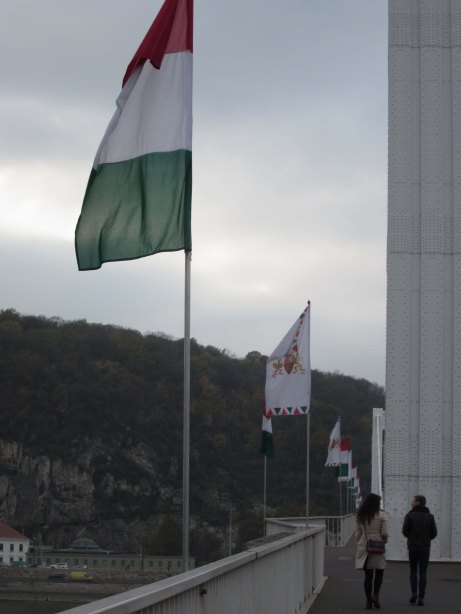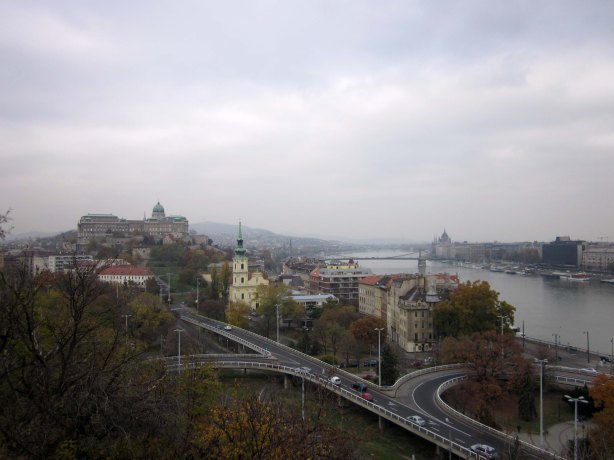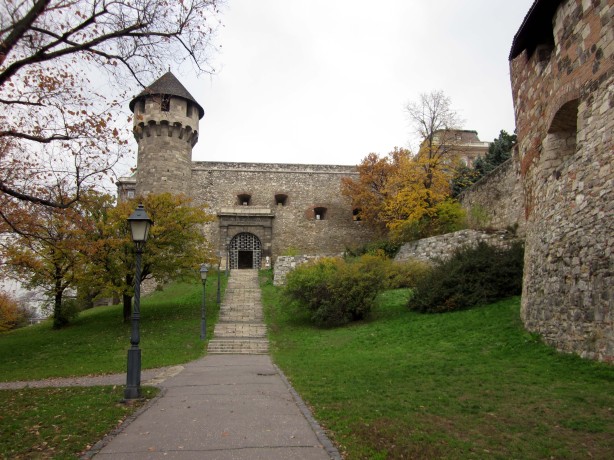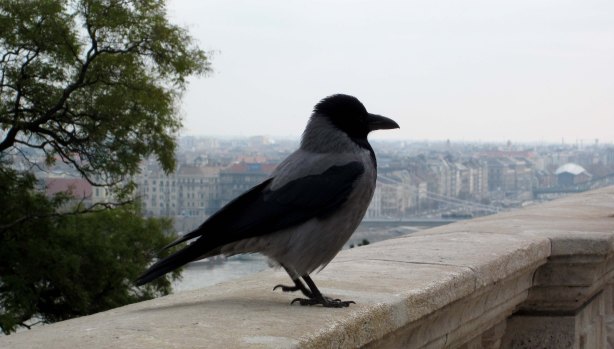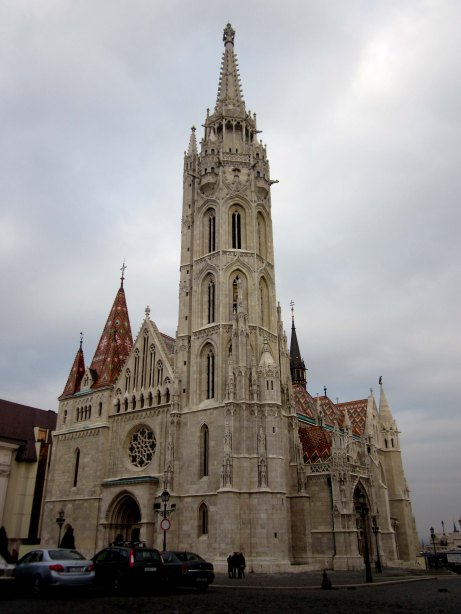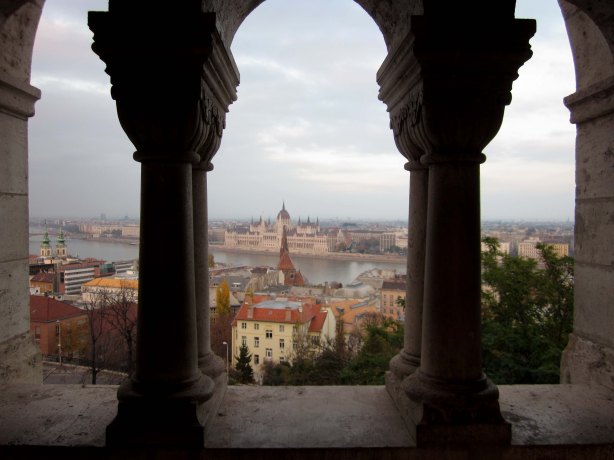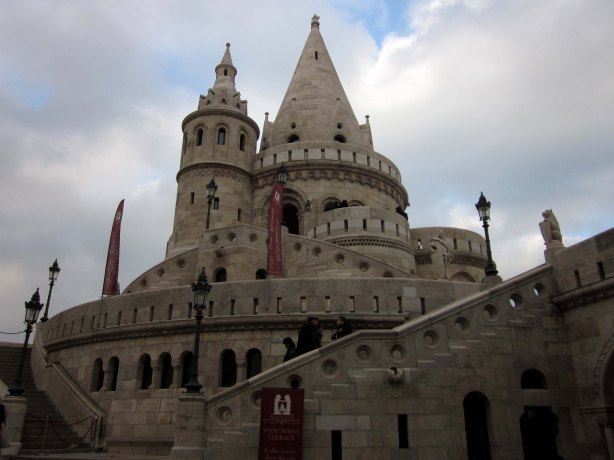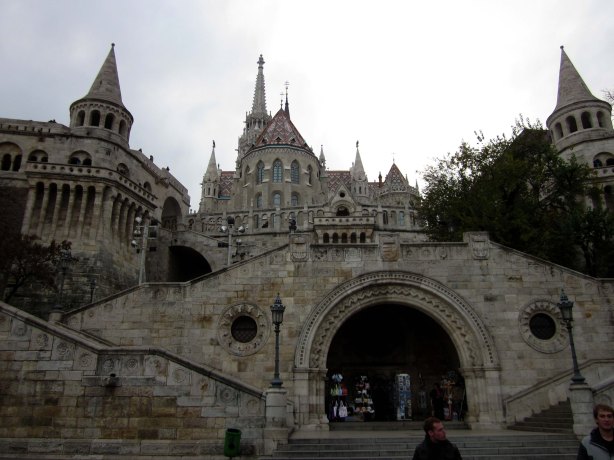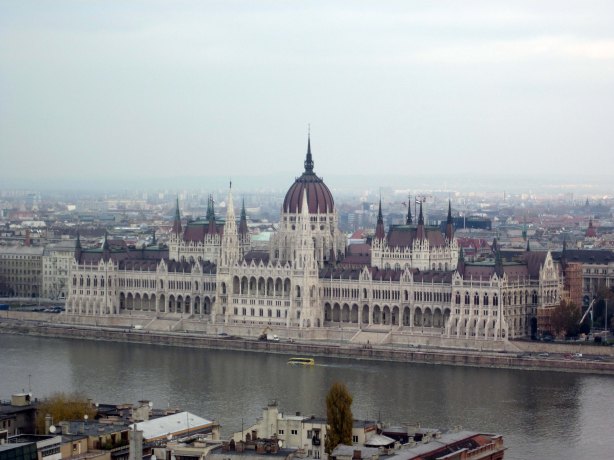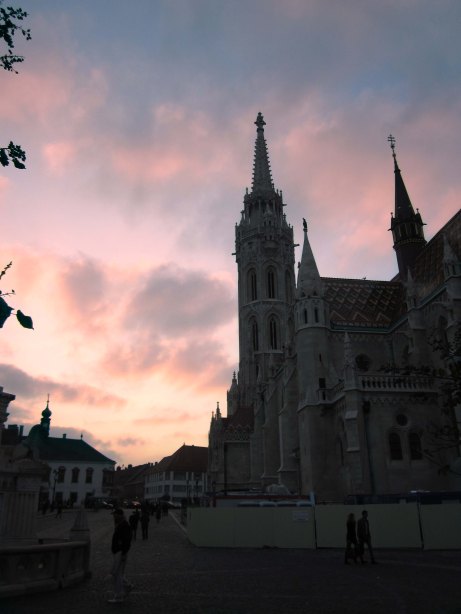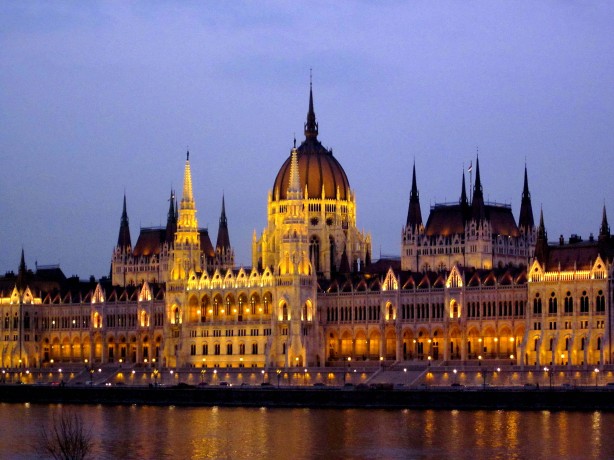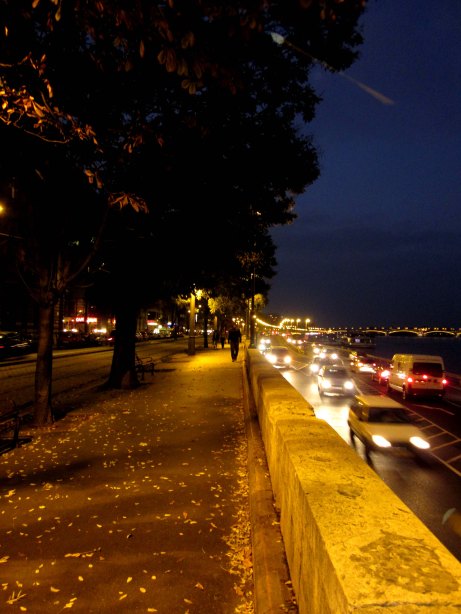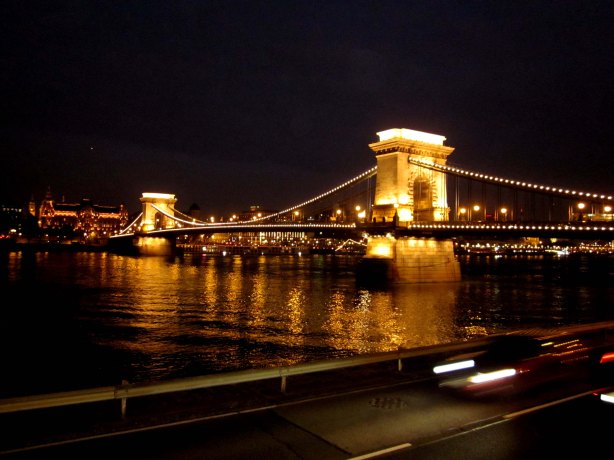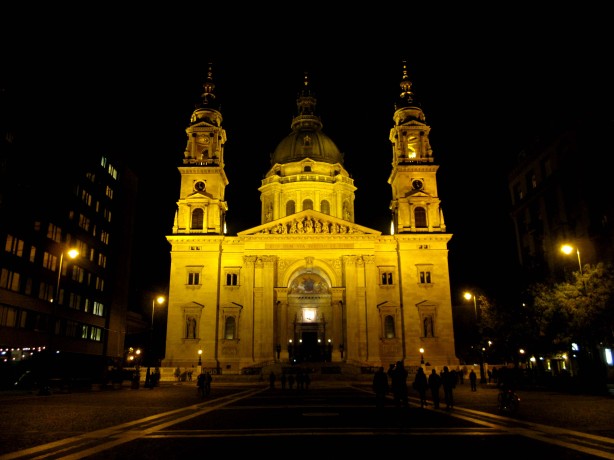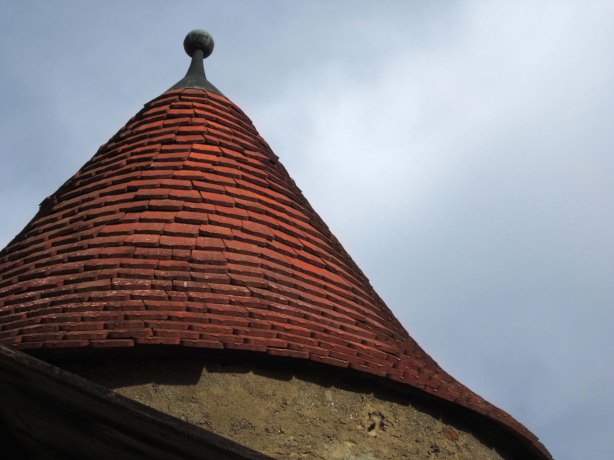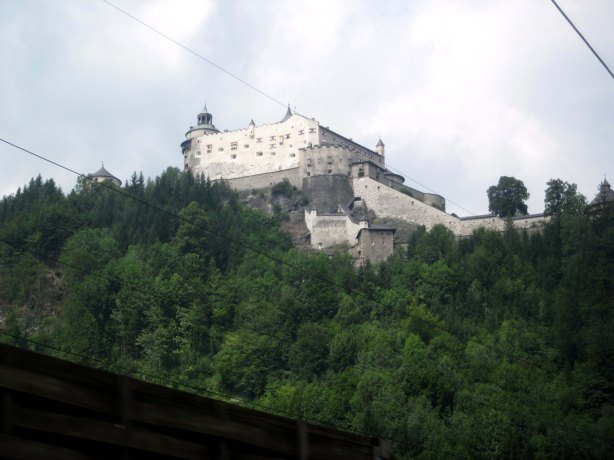One weekend we decided it was time to make a final trip together before the end of the semester. Budapest was our destination, only about three hours away by train. Therefore, we made day plans to leave Vienna early in the morning and return the same day. Although one day in Budapest was not enough to get to know the city very well it was a great break from all the work and stress that had been building up.
Like many of the cities we’ve been to, the train station was nowhere near the main attractions of the city, so once we oriented ourselves we set out towards the Buda Castle, which was on the other side of the Danube.
Heading away from the station, towards the Danube.
It might have just been the time that we visited, but the city was quiet. I know Budapest is a really popular city to travel to, but most of the city seemed empty and even the main tourist attractions weren’t very crowded.
There are a lot of bridges crossing the Danube, the one below is the only white bridge and it looks somewhat out of place and too modern in such an old city.
Making our way across the bridge.
Directly across from the bridge was a cliff face that had stairs and paths built into it. At the top was a large statue and a nice view of the city.
Up on the hill is the castle and just on the right side of the river is another domed building which is the Parliament building. Budapest used to be the second most important city behind the Austro-Hungarian Empire. The empire was split into two parts with different governing bodies, but Franz Joseph was still technically King of Hungary as well as Emperor of Austria. In terms of defense and international affairs Franz Joseph’s law ruled supreme.
We made our way slowly to the castle, which was just open to the public. I’m not really sure what the castle is used for, but it was a nice place to wander around.
A small side entrance to the castle that we took.
Just a bird friend that we made. They were everywhere and not at all afraid of people.
We headed out the back side of the castle and came to a small street with carts selling trinkets. This area had some more tourist activities, including archery. I had never tried archery before so of course I had to do it! I completely failed to launch the arrow on my first try. I let go of the string and the arrow just fell to the ground, but then Ari gave me a few pointers and I hit the target twice! It was fun and I definitely want to try it again.
After that we headed down a cute road full of restaurants and shops. This street reminded me a lot of the Golden Lane in Prague, although the houses were a lot larger. Eventually we came to Matthias Church, which had one of the more colorful roofs I’ve seen on a church. This church is up on the hill and looks out along the river.
Just behind the church is Fisherman’s Bastion. It stands right on the top of the hill overlooking the river and was probably the only place that we went in Budapest that was a little crowded. I really like this place, because it was similar to a maze. Each tower has multiple twirling staircase and underneath each section are small hallways that people can walk through and look out towards Parliament.
After taking a copious amount of photos, we got hungry and went to one of the restaurants along the road. It was really cheap and like a buffet style. Since we had been on the train for a good while and then exploring the city, it was around three when we actually had lunch and by that time it was already getting a little dark out. Therefore, we decided to head towards the riverfront to make sure that we could get pictures of Parliament at night.
Fisherman’s Bastion from below with the church rising behind it.
The view of Parliament from Fisherman’s Bastion.
The church with the sun setting.
The lights decorating Parliament didn’t turn on for some time, so while the sun set we sat next to the water and watched the cars rush by. Finally, the lights slowly came on. It is a really beautiful building at night.
It was getting late and we still needed to catch our train, so we headed back to the first bridge we could find.
The sidewalk, heading back to the train station.
Chain Bridge. This is the one that’s famous and has the lion statues on either end.
We had a little extra time and wanted to see St. Stephan’s Basilica at night. It was very impressive to walk up to. It was the only building that was lit up and the square in front of it was mostly empty.
I think that Budapest is one of the more beautiful cities I’ve seen at night. The way they light up the bridges it just amazing. I’m glad we got to see it in contrast to Vienna. Both were influenced by the Habsburg monarchy, but in very different ways.


